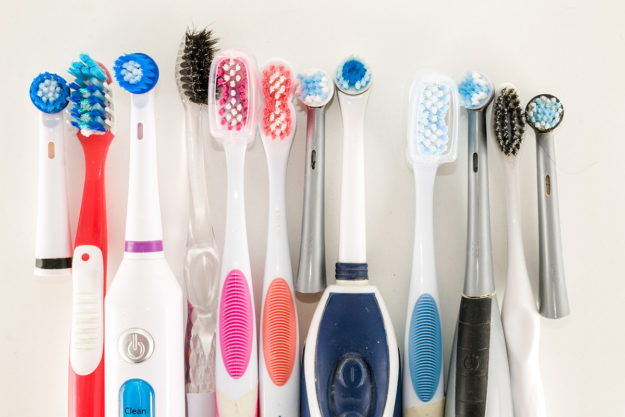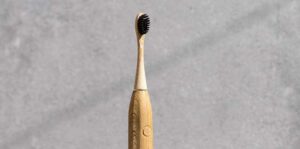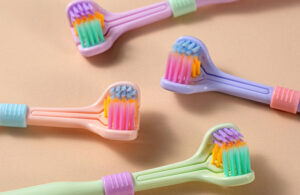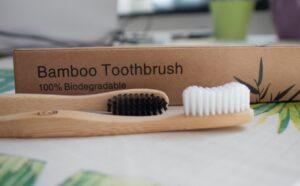
Toothbrushes are an essential part of everyone’s daily hygiene routine as they help keep our teeth and gums healthy. But have you ever wondered how long your toothbrush actually is, and why is it so? Knowing the size of your toothbrush can be helpful for many reasons, such as packing for travel or making sure that you have the right size storage container for it.
The average length of an adult toothbrush is between 7 and 7.5 inches, or 17.8 cm and 21.6cm respectively. This includes the toothbrush head, which is between 1.25 and 1.5 inches (3.2 cm and 3.8 cm). In fact, American Dental Association (ADA) recommends a toothbrush length of 1.25 inches.
So why is it not shorter, longer, or some other dimension entirely? It turns out that the length of your toothbrush isn’t arbitrary; it’s a carefully designed feature that plays a pivotal role in your daily dental routine.
In the rest of this article, we will identify the different components of a toothbrush and understand the typical length of the different types of toothbrush sold. We will also attempt to uncover the thought and precision that goes into creating this essential tool for maintaining a healthy smile.
Components of a ToothBrush
To identify the different types of toothbrush, we must first understand the components of it. The toothbrush may look like a simple tool to clean your teeth and maintain oral hygiene. However, it can be broken down into several components, all of which play an important role. These includes:
- Handle. This is the part that you hold onto during brushing. It is often made with plastic and rubber-like materials to provide an easy grip.
- Head. The head helps to hold the bristles. For most regular toothbrush, the head is oval or rectangular in design. However, for many electric toothbrush, the head is designed to be circular.
- Bristle. These are the small, flexible fibers that ‘grow’ from the head. Depending on the brand or materials, the bristles can come in different length and stiffness level
- Neck. The neck is the narrow portion of the toothbrush that connects the handle to the head. It is typically made of plastic and are deliberately designed to be narrow to allow the toothbrush to glide smoothly in the mouth. Some toothbrush comes with a flexible neck that bends when excessive pressure is used. This reduces the damage done to the teeth and gums by absorbing the pressure.
- Tongue Cleaner. Some toothbrush may provide a tongue cleaner at the back of the head. This helps to scrape the tongue and remove any bacteria that may linger, thereby reducing the risk of bad breath and cavities.
To summarise. there are several components of a toothbrush and together, they work to clean your teeth and tongue. Everyone have different needs and comfort level. As such, it is important to choose a toothbrush with the right bristle stiffness, length, and head size to fit your mouth and brushing style.
Typical Length of Different Toothbrushes
As mentioned, the length of a toothbrush can vary significantly depending on the type and its intended user.
While the length of an adult toothbrush is between 7 and 7.5 inches, the length of a child toothbrush is much smaller, at only 5 to 6.5 inches. It is worthy to note that the head of the toothbrush differs significantly based on the recommended age. For instances, toothbrushes for toddlers between the age of 0 and 2 should have a head length of approximately 0.6 inches (1.5cm). In contrast, toothbrushes for young children above the age of 12 should have a length of 1 inch (2.5cm).
Also, travel-sized toothbrushes for adult toothbrushes are generally shorter in length for the purpose of convenience.
You may be interested in: Does Flossing Actually Whiten Your Teeth?
Apart from traditional toothbrushes, there are also electric toothbrushes. The electric toothbrushes can be further divided into two types: oscillating and sonic. The former contains small, rounded head that rotate back and forth to remove plaque. On the other hand, sonic toothbrushes utilize high-frequency vibrations to create a sweeping motion that cleans your teeth. While both work differently, they both utilize a common component, and it is a rechargeable battery.
The battery adds significant weight and length to electric toothbrush, making them heavy and cumbersome to use. A typical electric toothbrush measures 9 to 9.5 inches (22.9cm to 24.1cm) in length and up to 1 pound in weight.
Due to the long length and heavy weight of the electric toothbrush, they are not recommended for children below the age of 6.
Reasons for Length of a Toothbrush
The length of a standard toothbrush typically fall within a specific range. The reason for this length is primarily based on practicality, ergonomics, and effective cleaning. Here’s why toothbrushes are typically this length:
- Effective Cleaning: A toothbrush of this size is long enough to comfortably reach all the surfaces of your teeth, including the back molars. Effective cleaning is essential for removing plaque, food particles, and bacteria from your teeth, gums, and tongue.
- Ergonomics: The length of a toothbrush handle is designed to provide a comfortable and secure grip. It should fit comfortably in your hand, allowing you to control the brushing motion effectively.
- Control and Precision: The handle length allows you to have good control and precision when brushing your teeth. This is important for reaching different angles in your mouth and ensuring a thorough clean.
- Balance: Toothbrushes are designed to have a balance between the handle and the head. This balance ensures that the toothbrush is easy to maneuver while brushing without excessive strain on your hand or wrist.
Ultimately, the size and length of a toothbrush are engineered to optimize your oral hygiene routine, ensuring effective and efficient cleaning while maintaining comfort and ease of use.
Takeaway
In summary, the length of a toothbrush can vary depending on the brand, type of toothbrush, and user. An adult toothbrush is typically between 7 and 7.5 inches long while a child’s toothbrush is only 6.5 inches long. While the length of a toothbrush differ, it is more important to choose one with the right length that fits comfortably in your hand.
In addition to length, it is also important to consider other factors such as the stiffness of the bristle, head size, and the handle grip. By choosing the right toothbrush, you can ensure that you are one step in the right direction in maintaining your oral health and hygiene!




